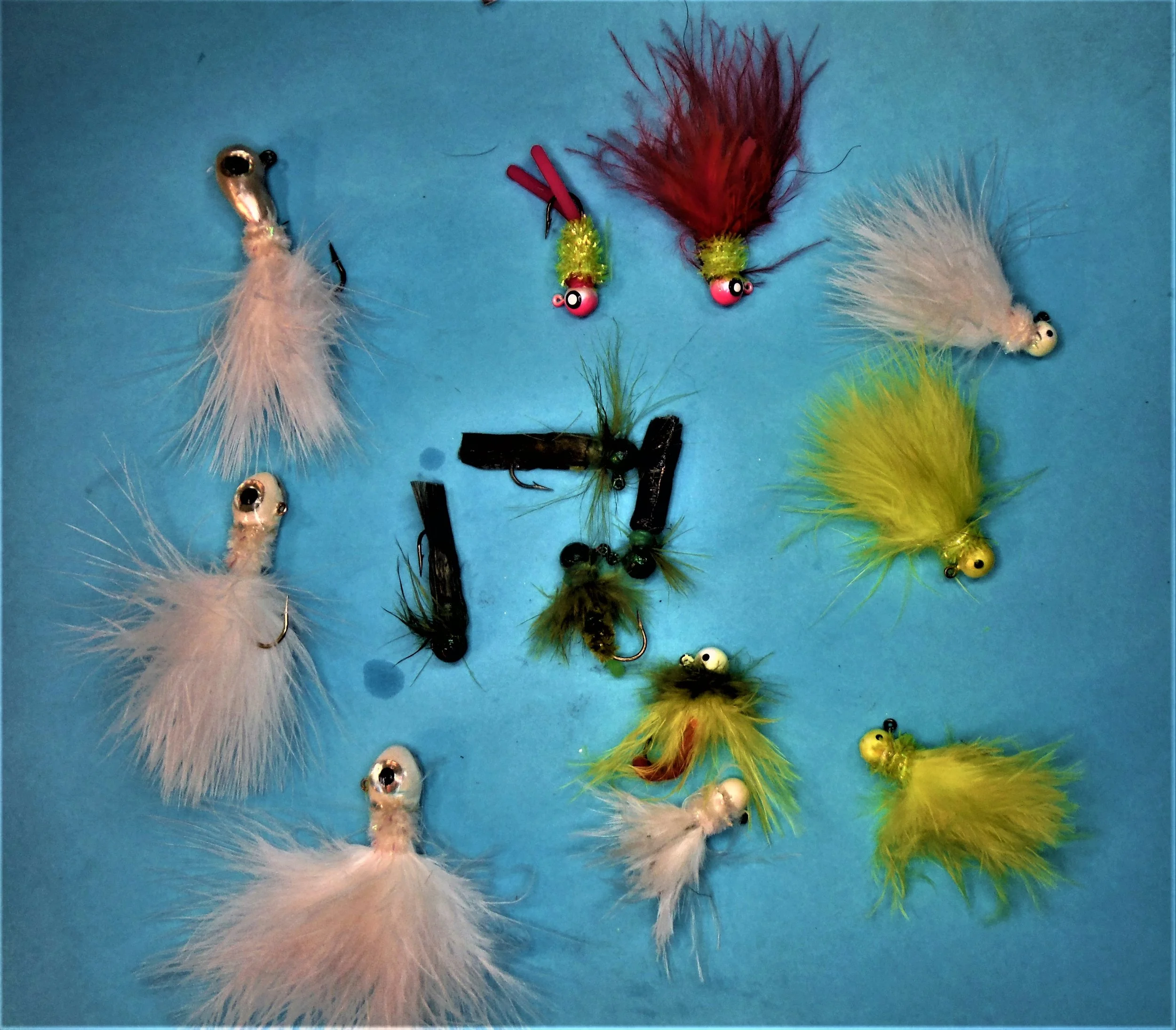
The Ice Fishing Page
In interior Alaska, we ice fish a lot, we ice fish from November to May, through three inches of ice to forty, down to forty below zero. If you’re not fishing past 20 below, you’re not fishing much.
There are lots of ways to fish, from sitting on a bucket on the ice to fishing in real luxury in a commercial fish house. It can be as simple as you want to as involved as you want to be. It starts, of course with getting through the Ice. There are lots of choices for that, of course. In the early season, an axe or ice chisel works well on thin ice. Later on, an auger works better. You have choices of auger diameter from four inches to ten. You also have choices in power sources that include manual, propane, gas and electric. Your choice will depend on what hole diameter you like or need and what kind of fishing you want to do and what time of year you plan to be fishing.
All of the methods for getting through the ice have their advantages and disadvantages. Things to consider when choosing are thickness of the ice, mode of transportation to the fishing grounds, how many holes you may need, the size of those holes, your ability to charge batteries if and when they are low and, weather or not you will be drilling in an ice house. Gas powered augers may be best for you if you plan on extended stays at remote sites with no generator.
If you are flying out to remote locations, drilling holes in ice houses, and have the ability to charge batteries, one of the electric models might be best for you. The power head is lite weight, does not require (messy) gas and oil to run, and has no two cycle fumes to breath while you are drilling in a structure.
The next thing you might want to consider is the kind of fishing structure you might want to have. They range all the way from sitting on a bucket on the ice and clam shell folding sleds to pop-up tents and hard structures. Your choices will depend on when and where you want to fish, as well as how much fishing you plan on doing. For early, and nice weather fishing, sitting on a bucket or folding chair on the ice is fine. If you want to fish through the coldest part of winter, appreciate a heated space and want to fish with young people, a structure of one kind or another makes things nice. I have and use all kinds of structures from commercially made pop-ups to home made solid structures. Types of structures have their advantages and disadvantages too. For remote fishing pop-ups are a must. Pop-ups also allow you some versatility as they are easier to move from place to place. They are not as good for windy weather as a solid structure. If you fish often in the same place, have road access, want to fish in almost any weather and like the ability to drive up drill holes and start fishing, a solid structure may be right for you. My motto has become, “If you are suffering you are doing it wrong”. For the least amount of suffering and most fishing in all kinds of weather I built my own solid fish house that rides on it’s own trailer and just requires cranking it up on built in ramps to lift it off the ice and driving away when it’s time to move.
My home-built fish house has a propane heater that is vented outdoors, electric lights, a ceiling fan and virtually everything we need to fish comfortably throughout the winter.
For the most in comfort and luxury, you can’t beat fishing from an Ice Castle mobile fish house. They range in size from 8 footers all the way up to 45 foot trailers with beds, kitchenettes, bath rooms and fishing for ten.
No talk about ice fishing is complete without talking about gear. For rods we use both jigging sticks with or with out bobbers and ice fishing rods with reels on them. In Alaska we are allowed to ice fish with two poles. I like to “dead stick” with a jigging stick and a bobber with bait on a jig with one pole and jig with an unbaited jig and no bobber on a rod and reel. Some days the unbaited jig catches almost all of the fish and they tend to be larger on that pole. Some days the baited jig catches all of the fish.
One of the things we do that helps put fish on the line is we tie our own jigs. They don’t look like anything you can buy at the sporting goods store so everyone else on the lake is not using them. Anything different seems attractive.
The other thing we do is make our own bait. It’s not only a lot less expensive but it’s fresher and works better. Fish in popular lakes swim around all day looking at and smelling the same baits that people buy at the store. Home made baits look and smell different. We start with small shrimp, salmon eggs, squid or octopus and add salmon egg cure. To make it more unusual we add garlic, bacon, smoke, or hot sauce. Anything to make it different.Most of this focuses on stocked trout, char and salmon lakes but it applies to pike lakes and lake trout lakes also. We just alter our baits and methods for those species. Check other pages on this site for specific methods and baits for them
For the most enjoyment, take a kid fishing. Good luck, be safe, have fun.
Watch a video about Ice fishing








